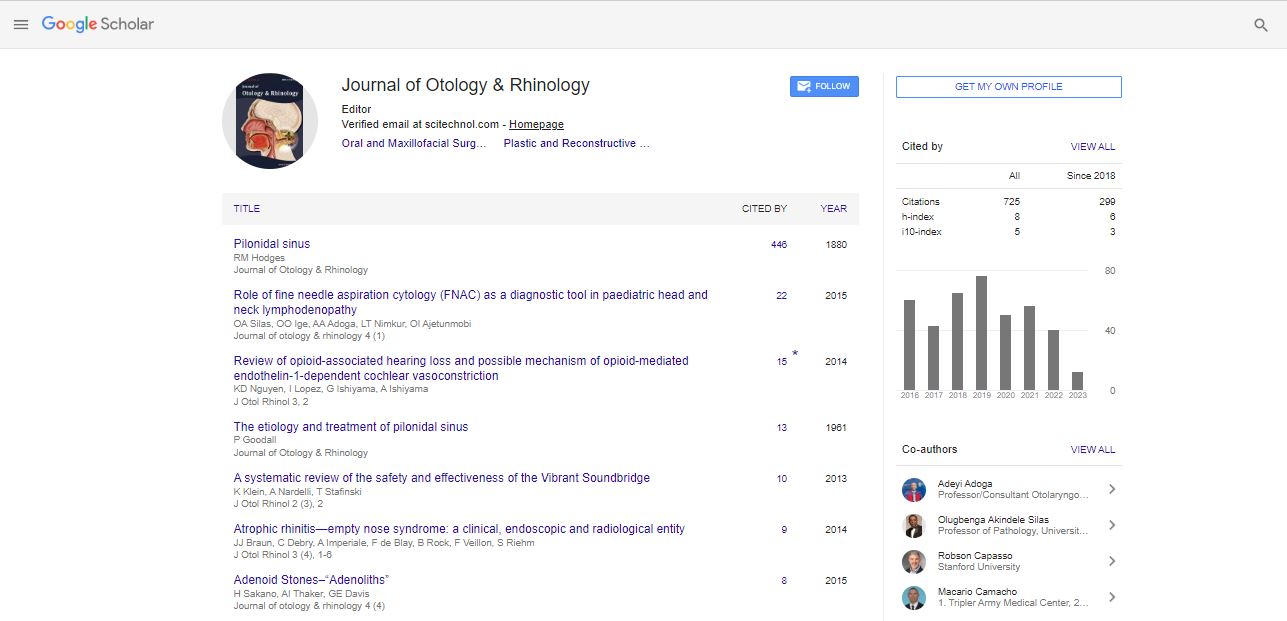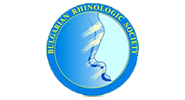Commentary, J Otol Rhinol Vol: 11 Issue: 6
Allergy and Allergic Rhinitis are Risk Factors for Otitis Media
David Hurst *
Department of Otology, University of Texas Health Science Center, San Antonio, USA
*Corresponding Author: David Hurst
Department of Otology, University of Texas Health Science Center, San Antonio, USA
E-mail: hurstdavid@gmail.com
Received date: 17 May, 2022, Manuscript No. JOR-22-67321;
Editor assigned date: 19 May, 2022, PreQC No. JOR-22-67321 (PQ);
Reviewed date: 02 June, 2022, QC No. JOR-22-67321;
Revised date: 09 June, 2022, Manuscript No. JOR-22-67321 (R);
Published date: 16 June, 2022, DOI: 10.4172/2324-8785.100030
Citation: Hurst D (2022) Allergy and Allergic Rhinitis are Risk Factors for Otitis Media. J Otol Rhinol 11:6.
Keywords: Rhinitis
Description
The shaping concern and challenge for life science worldwide is that the endlessly increasing burden of ill-health, inferiority of life, and socioeconomic difference arising as a result of nontransmissible diseases. The restricted medical facilities and low economic standing area unit inescapable factors, particularly for the urban poor in developing countries. NCDs chiefly embody vas diseases, diabetes, cancer, and chronic metastasis diseases. The increasing incidence of metastasis diseases, together with hypersensitivity reaction and respiratory illness, has been attributed to pollution, global climate change, and urbanization moving each humans and therefore the region.1 Increasing epidemiology-based studies area unit stressing new cases of metastasis disorders like inflammation and respiratory illness, particularly among vulnerable teams like kids and older adults, arising as a result of global climate change, the high rate of worldwide warming, and pollution. Global climate change threatens the last fifty years of gains created publicly health.
Allergic diseases area unit a results of the convoluted interaction of genetic makeup and environmental factors. The temporal arrangement of exposure to the substance precursors as sensitizing agents may be a decisive consider the long incidence and prevalence of allergic diseases. For metastasis disorders, broadly speaking the chance factors area unit activity agents, indoor pollution from change of state fuel and tobacco smoke, and environmental exposure to air pollutants from traffic and fuel burning, all of that area unit manageable and preventable factors however area unit underestimated by governmental agencies across the planet, despite timely unharness of observation, status, and health impact reports of such diseases by the planet Health Organization and alternative international bodies.
Endlessly Increasing
The male fruitful structures of plants, spore grains, as aeroallergen area unit well studied across the planet and area unit the first tributary agent of spore hypersensitivity reaction or allergic rhinitis, endlessly increasing in these dynamic weather conditions. {pollinosis|hay fever|allergic inflammation} encompasses allergic responses like rhinitis (hay fever) and respiratory illness and globally area unit an increasing public health concern. Excluding inducement respiratory illness and allergic diseases, a high abundance of spore has conjointly been related to nonallergic metastasis diseases, like chronic preventative respiratory organ sickness, stroke, MI, and even suicide.
The count, spore abundance, dispersal, and allergenicity area unit the parameters that area unit tormented by the native climate. With dynamic weather conditions, these variables fluctuate because the phenology is affected. The entire allergenicity isn't a similar throughout the year (major allergens area unit few and minor allergens represent over 50%). The concentrations of mobile spore or spores and durations of exposure to those allergens are found to be vital factors influencing the exacerbation of allergic symptoms. Spore grains or plant-derived paucimicronic parts (such as stem particles, trichome components, plant debris) carry allergens that behave as simply respirable particles which will turn out allergic symptoms. These plant-derived particles conjointly move with pollution (particulate matter, ozone) to modulate the allergenicity, successively resulting in exaggerated airway sensitization.
Allergic Symptoms
Pollen grains area unit created by flowering plants (angiosperms) and gymnosperms (naked seed plants) of the 250,000 well-identified and elaborate pollen-producing plant species, fewer than a hundred area unit famed to induce allergic rhinitis. Among these, spore grain diffusion mechanisms like fertilization from anemophilous or wind-pollinated plants area unit the foremost potent matter sources, whereas pollens from entomophilous or insect-pollinated plants area unit famed to cause fewer allergic symptoms supported a sort I hypersensitivity mechanism. Spore grains or subparticles but two.
In the event of a world infectious pandemic, forceful measures is also required that limits or need adjustment of mobile allergic reaction services. However, no principle for the way to rate service pack up and patient care exists. A consensus-based ad-hoc knowledgeable panel of allergy/immunology specialists from the us and North American country developed a service and patient prioritization schematic to briefly sorting allergy/immunology services. Recommendations and feedback were developed iteratively; victimization Associate in Nursing tailored changed urban center methodology to attain accord. Throughout the continuing pandemic whereas social distancing is being inspired, most allergy/immunology care can be postponed/delayed or handled through virtual care. With the exception of the many patients with primary immunological disorder, patients on venom therapy, and patients with respiratory disease of a precise severity, there's restricted want for face-to-face visits underneath such conditions.
These suggestions ar supposed to assist give a logical approach to quickly change service to mitigate risk to each medical employees and patients. significantly, individual community circumstances is also distinctive and need discourse thought. the choice to enact any of those measures rests with the judgment of every practician and individual health care system. Pandemics ar out of the blue, and implemented social distancing/quarantining is extremely uncommon. This knowledgeable panel accord document offers a prioritization rational to assist guide deciding once such things arise Associate in Nursingd an allergist/immunologist is forced to scale back services or makes the choice on his or her own to try and do thus.
Antimicrobial therapies developed from medical specialty, specifically the first perform of the system in host defence against microbic pathogens, may provide a number of the step-change methods in drug style and development desperately needed to come up with a lot of required, really novel interventions in communicable disease. The system is Associate in nursing thus far underexploited resource of novel molecules and also the blueprints for brand spanking new approaches to combating infection with non-antibiotic, directly antimicrobial methods.
A number of skin manifestations have been represented in individual case reports and nationwide case series. Galván Casas et al published the primary giant clinical study of 375 patients with varied COVID-19–associated skin manifestations and, on the premise of the offered literature and direct clinical expertise, three of the authors of this text have known half dozen main phenotypes: urticarial rash, convergent erythematous rash, papulovesicular exanthema, a chilblain-like acral pattern, a skin problem reticularis pattern, and a purpuric vasculitic pattern. However, there are reports of a miscellany of different connective tissue displays that can't be enclosed during this classification, together with erythroderma multiforme–like, dermatosis rosea–like, and Grover disease–like manifestations. Galván Casas et al found that maculopapular eruptions accounted for pretty much half the connective tissue manifestations in their study, however the bulk of revealed studies have centered on chilblain-like acral lesions, that ar usually related to a benign clinical course and a lot of oft rumored in youngsters.
 Spanish
Spanish  Chinese
Chinese  Russian
Russian  German
German  French
French  Japanese
Japanese  Portuguese
Portuguese  Hindi
Hindi 


